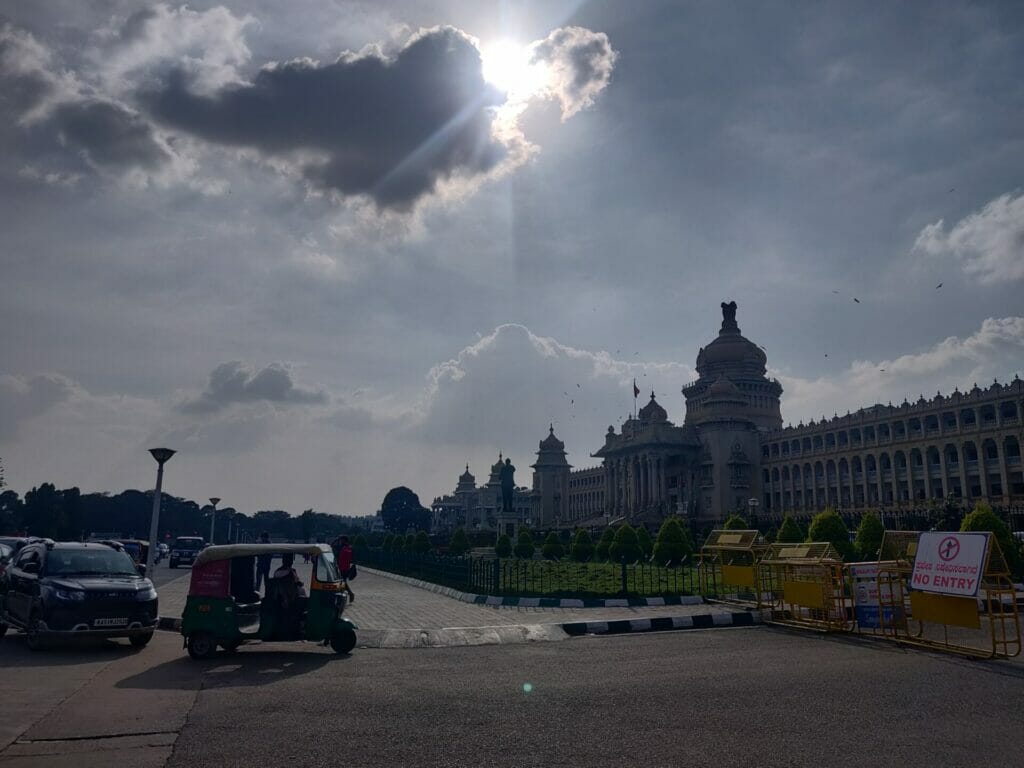As world leaders gather at Egypt’s Sharm El Sheikh for the United Nations Conference of Parties (COP27), climate finance, backed by India, is high up on the agenda. This refers to a transnational financial reserve that will aid the mitigation and adaptation strategies of the “less endowed and more vulnerable” countries.
While addressing a high-level Ministerial Dialogue on Climate Finance at COP27, India’s Minister for Environment, Forest & Climate Change, Bhupendra Yadav outlined how there is no understanding of what really comprises climate finance.
However, it was set up to address “loss and damage”, a term used to describe the financial and non-financial costs incurred by countries, especially developing countries in the global South, due to extreme climate weather events. There has been a significant push by these countries to get the wealthier or more developed countries, which have historically been emitting more carbon particles into the atmosphere, to fund these losses as part of climate reparations.

In this interview with Citizen Matters, Shrimoyee Bhattacharya, Program Lead of Urban Development at the Sustainable Cities and Transport program at the World Resources Institute, outlines the importance of climate finance at the decentralised level.
Why is climate finance important now amidst the backdrop of conversations at COP27 on loss and damage?
From our experience of working on climate action plans for cities, we have noticed the need for several newer aspects of climate finance emerging apart from Clean Development Mechanisms to make climate action implementable at the local level. In addressing loss and damage, there would be increasing pressures from the ecosystem to financially address the impacts of climate hazards in cities.
Another most important aspect would be to create infrastructure across India’s urban geographies that are more climate-resilient and which can reduce the need to compensate for climate-induced loss and damage at a local level.
This would require a shift from business-as-usual ways of planning and managing urban infrastructure, services and amenities. This would need newer skills and capacities at decentralised levels. The state and the cities have to increasingly think about this as it becomes a part of the to-be climate budget.
In terms of the utilisation of climate finance, how would one classify a disaster as a climate extremity or an urban planning disaster, which the Bengaluru floods were?
In the case of the Bengaluru floods, while the intensity of rainfall received was high, one cannot negate the role that the city’s planning and development over the past few decades played in the aftermath of the rains.
Majority of established climate models and predictions for regions adjoining Bengaluru tell us that there is a likelihood that extremities (maximum rainfall and maximum temperature, and minimum rainfall and minimum temperature) might increase, which the city needs to be prepared for. While we are seeing more frequent incidents like heavy rainfall, that doesn’t mean that the city has to get flooded every time.

While the masterplan for the city is awaiting revision, it is necessary to take stock of the projects that are in the pipeline for improving the city’s infrastructure and assess whether those have factored in climate change either from a mitigation or resilience perspective. This is where a lot of the finances could be better utilised, and streamlined for creating climate-responsive infrastructure.
Could you elaborate on how this can be done?
For example, the development of a public park under AMRUT (Atal Mission for Rejuvenation and Urban Transformation) can act as a sponge space for the city, as well as a green cover that can reduce heat island effects. While this is a direct action of building resilience against climate change, under a scheme like AMRUT, we are not used to looking at it that way. We also don’t yet report climate budgets at the city level. This is a much-needed exercise as we will be able to chart out how much of it is directly benefiting adaptation and mitigation and go from there.
What role does climate financing have in bolstering the city’s climate resilience?
The city’s Climate Action Plan (CAP) is currently being developed. As a focus, Bengaluru’s CAP looks at six to seven different sectors to cover both the mitigation and adaptation aspects-energy and buildings, transportation, solid waste, water and wastewater, urban planning, biodiversity, and disaster resilience.
Read more: Cities must focus on disaster resilient infrastructure in the era of climate change
This is not to say that associated sectors like social amenities (health) are not a part of it, but the former are the sectors where action will be proposed. In doing so, for the first time, a city-level GHG inventory has been developed for Bengaluru. This has been modelled after the Global Protocol for Community-Scale Greenhouse Gas Emission Inventories (GPC) that will cover solid waste, transportation, and stationary energy sectors, which are specifically important for mitigation.
So what the CAP will try and do is to link the proposed actions to already ongoing activities and see where new investments are required across avenues that the city has not thought of yet.

What would a governance or a jurisdictional model for disbursing climate finance look like? What kind of bodies at what levels will be roped in to make decisions?
In Bengaluru, the BBMP is the owner and keeper of the plan. Having said that, not all the sectors mentioned above are looked after by them. It would be impractical to say that the Urban Local Bodies will solely be implementing the plan as it requires a coordinated effort.
We have observed across cities that every agency has its own priorities and is overwhelmed with day-to-day tasks, any newer agenda takes a backseat, especially when that does not have statutory backing which is the case with city-level Climate Action Plans at present. We have proposed the creation of a climate action cell for Bengaluru (akin to the one in Mumbai), which can work as an overarching platform for all of these agencies to drive the CAP. However, there is also a need for numerous scales of governance.
Moreover, there is also a need to build coordination and consensus in considering different spatial scales of governance in city planning, which are above and beyond the regular administrative jurisdictions. For instance, Bengaluru’s whole natural drainage and water systems are intrinsically networked within the larger region. We need to consider these scales to realise that a city’s CAP is not necessarily within the city limits.
Read more: Disaster management in Bengaluru: Temporary fixes touted as solutions as city floods again
Will it just be Urban Local Bodies, or will the decision-making trickle down to committees at the ward levels?
CAP is a city-level document responding to both global commitments and local priorities, thus actions taking place at an area or neighbourhood level will have to be informed by local realities through a bottom-up process. Micro-level planning is currently missing in our planning practice. This makes it difficult to implement the intended actions or track their success at ward levels, also because the action suggested in a city-level plan are global in nature. What we need as a next step is to break the CAP down into a set of micro-level plans where ward committees and citizen platforms can play a critical role.
As of now, the BBMP will be taking the plan down to the ward levels and World Resources Institute, India, will be involved in sensitising ward-level nodal officers. This will help discuss the priorities of people and what role can citizen platforms play in the implementation and tracking of the plan. We are hoping that this process will be concretised in the coming months.

Global conversations are about putting people at the heart of finance. How can the same be assured for Bengaluru, that its most climate-vulnerable communities have access to finance?
Irrespective of the CAP, one of the ways this can be done is by making risk and vulnerability assessments as a part of every plan or project, and of course through loss and damage provisions at the city level.
In the case of Bengaluru and Mumbai, this assessment exercise has been done robustly for both CAPs. As a principle, climate action is formulated keeping human-nature-economy as three tenets, and further prioritised by keeping vulnerable or marginalised communities at the centre.
Even in the framework under which we are developing the plan, the determination of risk is a cumulative assessment of all vulnerabilities that people from a certain geography or socio-economic group are exposed to; combined with the intensity of hazards they are likely to face. These include parameters like age, ability, literacy, gender, access to facilities and services, access to housing and emergency services etc.
As far as I understand, currently, Bengaluru does not have access to climate finance yet. Is this absence being felt in certain sectors or by certain people?
Climate finance is still an evolving area for cities. The Karnataka State Climate Action Plan (2nd assessment) talks about budgets across different sectors, and urban is only one part of it which touches upon the metro, solid waste management and water. However, a city-level CAP is much more granular and covers more in scope and cuts across sectors, which are not considered as ‘urban’ in a state-level or national-level plan such as energy.
Therefore, when we talk about climate finance at a city level, we shouldn’t assume it is another layer of plan that will be added on top of all the existing plans, but as a common lens to all the other sectoral plans. It will enable the creation of new initiatives and infrastructures that are informed by climate.
Additionally, when finance is made available, it will allow agencies to bring focus and develop newer capacities or skills. This is where the requirements of climate finance become quite apparent in our conversations around city-level climate resilience.